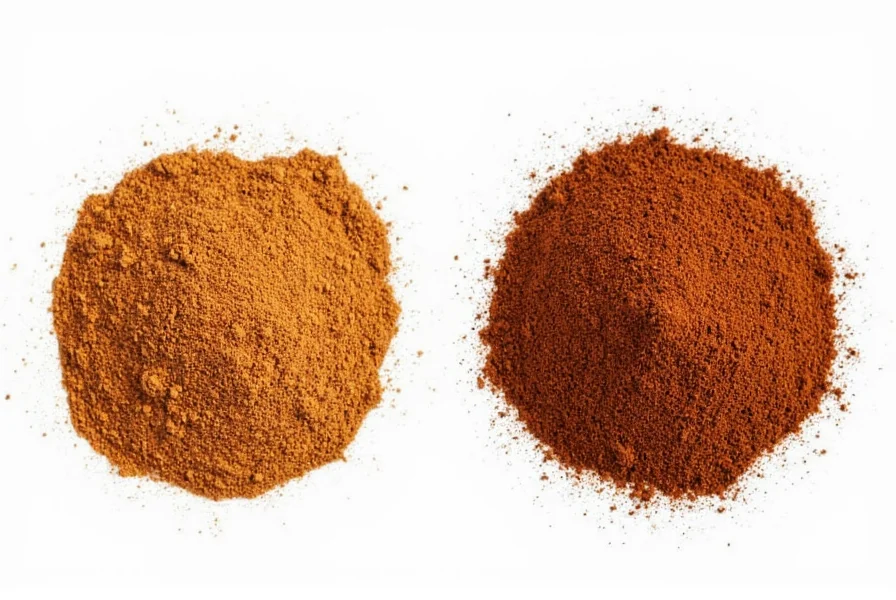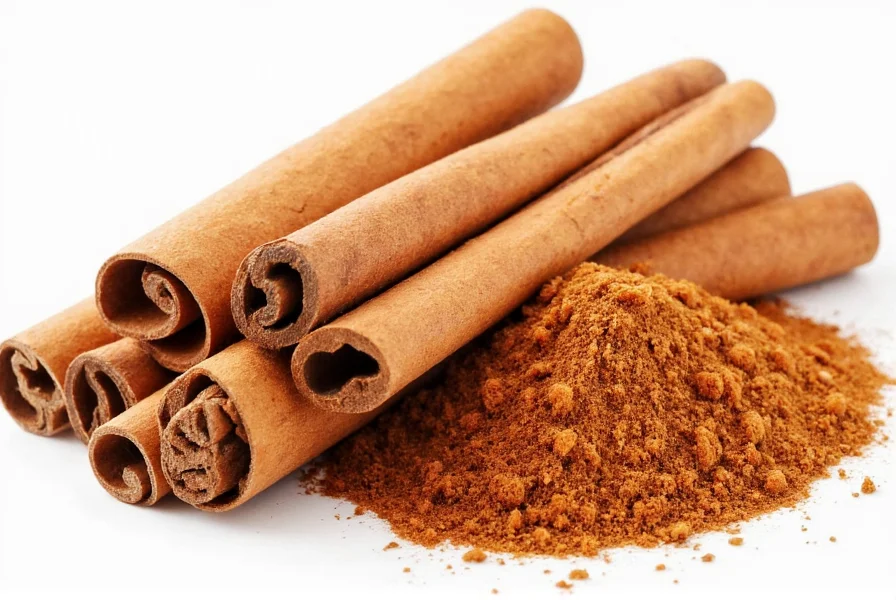When shopping for cinnamon, understanding the critical differences between Ceylon and cassia varieties is essential for both culinary success and health considerations. While often sold simply as “cinnamon,” these two distinct spices come from different tree species and possess unique chemical compositions that affect their safety profiles and culinary applications.
Physical and Flavor Characteristics
Ceylon cinnamon, sometimes called “true cinnamon,” originates from Sri Lanka and southern India. It features multiple thin, delicate layers that form a tight, hollow tube with a light brown color. The flavor is subtle, sweet, and citrusy with complex floral notes. In contrast, cassia cinnamon—the variety most commonly found in supermarkets—comes from China and Indonesia. It has a single, thick, hard bark layer with a dark reddish-brown color and a stronger, more pungent, slightly bitter flavor profile.
| Characteristic | Ceylon Cinnamon | Cassia Cinnamon |
|---|---|---|
| Scientific Name | Cinnamomum verum | Cinnamomum cassia |
| Origin | Sri Lanka, India | China, Indonesia |
| Bark Structure | Multiple thin layers (like parchment) | Single thick, hard layer |
| Color | Light tan to medium brown | Dark reddish-brown |
| Flavor Profile | Delicate, sweet, citrusy | Strong, pungent, slightly bitter |
| Coumarin Content | 0.004-0.14% | 2.15-6.97% |
| Price | Higher (typically 5-10x cassia) | Lower (more widely available) |
The Critical Health Difference: Coumarin Content
The most significant distinction between these cinnamon varieties involves coumarin, a naturally occurring compound that gives cinnamon its distinctive aroma but can be harmful in excessive amounts. Cassia cinnamon contains substantially higher levels of coumarin compared to Ceylon cinnamon—up to 60 times more in some samples.
According to European Food Safety Authority research, the acceptable daily intake of coumarin is 0.1 mg per kilogram of body weight. For a 130-pound (59 kg) adult, this translates to approximately 5.9 mg daily. A single teaspoon of cassia cinnamon may contain 5-12 mg of coumarin, potentially exceeding safe limits with regular consumption. Ceylon cinnamon, with its minimal coumarin content, allows for more generous daily use without health concerns.
Long-term excessive coumarin intake has been associated with potential liver toxicity and may interact with certain medications, particularly blood thinners. Individuals with pre-existing liver conditions or those taking medications metabolized by the liver should exercise particular caution with cassia cinnamon consumption.

Culinary Applications and Recommendations
Both cinnamon varieties have their place in the kitchen, but understanding their strengths helps optimize culinary results. Cassia's robust flavor holds up well in hearty dishes like stews, curries, and baked goods where its intensity won't be overwhelmed. Its stronger taste makes it ideal for recipes using small quantities, like many American baked goods.
Ceylon cinnamon's delicate flavor shines in more subtle applications where its nuanced profile won't be lost. It's preferred in European and Mexican cuisines, particularly in custards, rice puddings, and delicate pastries. When making cinnamon tea or consuming cinnamon regularly for potential health benefits, Ceylon is the safer choice due to its minimal coumarin content.
For those using cinnamon supplements, verifying the type is crucial. Many supplements don't specify which cinnamon variety they contain, potentially exposing consumers to high coumarin levels. Reputable supplement manufacturers will clearly indicate if they use Ceylon cinnamon.
How to Identify Authentic Ceylon Cinnamon
Distinguishing between the two varieties can be challenging for consumers. When purchasing whole cinnamon, examine the quills: Ceylon forms multiple thin, rolled layers resembling parchment paper, while cassia consists of a single thick, hard layer. Ground cinnamon is more difficult to differentiate visually.
The most reliable identification method is checking product labels for specific terminology. Authentic Ceylon cinnamon should be labeled as “Cinnamomum verum,” “Ceylon cinnamon,” or “true cinnamon.” Products simply labeled “cinnamon” typically contain cassia. Specialty health food stores, ethnic markets (particularly South Asian), and reputable online spice retailers are more likely to carry genuine Ceylon cinnamon.

Practical Usage Guidelines
For regular culinary use (daily consumption), Ceylon cinnamon is the preferred choice due to its safety profile. If using cassia cinnamon, limit consumption to no more than 1 teaspoon daily for adults, and less for children or those with liver concerns. Those incorporating cinnamon into their diet for potential blood sugar management benefits should opt for Ceylon to avoid coumarin-related risks.
When baking or cooking with cinnamon, consider the recipe's requirements. For dishes requiring strong cinnamon flavor in small quantities (like snickerdoodles), cassia works well. For recipes where cinnamon is a primary flavor component (like rice pudding or cinnamon tea), Ceylon provides a more refined taste experience without bitterness.











 浙公网安备
33010002000092号
浙公网安备
33010002000092号 浙B2-20120091-4
浙B2-20120091-4